When it comes to food, mold is often associated with spoilage and decay. But what exactly is mold, and what happens if you eat it?
Mold is a type of fungus that grows in damp, warm environments. It is commonly found on food items such as bread, cheese, and fruits. While some types of mold are harmless, others can be toxic and cause serious health issues if ingested.
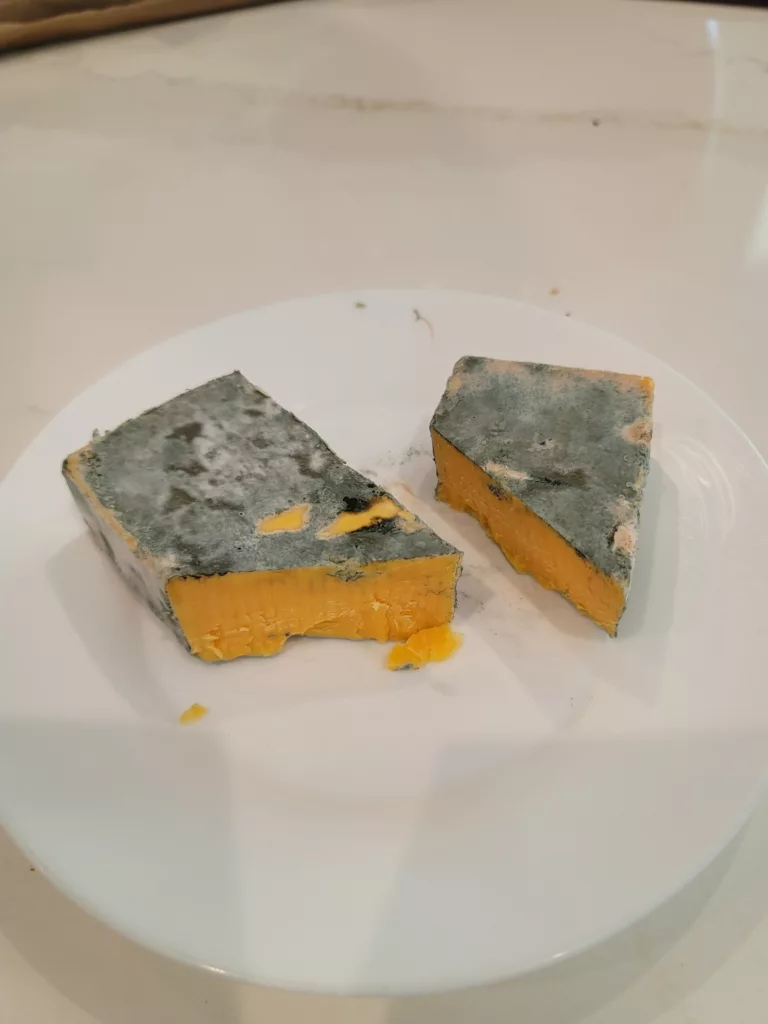
What is Mold
Mold is a type of fungus that grows in damp, warm environments and can be found both indoors and outdoors. It reproduces by releasing tiny spores into the air, which can then land on surfaces and grow into new mold colonies.
While some types of mold are harmless, others can produce mycotoxins, which are toxic substances that can cause serious health issues if ingested. Common types of mold found on food include Aspergillus, Penicillium, and Cladosporium.
Health Implications of Ingesting Mold
Eating moldy food can lead to a range of health issues, depending on the type of mold and the amount consumed. Ingesting toxic mold can cause symptoms such as nausea, vomiting, diarrhea, and abdominal pain. In severe cases, it can even lead to neurological problems and death.

Mold is a type of fungi that grows in damp and humid environments, such as bathrooms, kitchens, and basements. Mold spores are microscopic and can be found in the air we breathe. When mold spores land on a surface that has moisture, they can grow and spread quickly.
Types of Mold and Where They Grow
There are many types of mold, but only a few are harmful to humans. Some of the most common types of mold include Cladosporium, Penicillium, Aspergillus, and Alternaria.
These types of mold can be found in different environments, such as soil, plants, and decaying organic matter.
In homes, mold can grow on many surfaces, including walls, ceilings, carpets, and furniture. Mold can also grow in refrigerators if food is not properly stored or if there is excess moisture.
Distinguishing Harmful Mold from Edible Varieties
Not all types of mold are harmful to humans. In fact, some types of mold are used in food production, such as blue cheese, and are safe to eat.
However, harmful mold can cause health problems, such as allergies, respiratory issues, and infections. To avoid harmful mold, it is important to keep your home clean and dry, fix any leaks or water damage, and store food properly.
Health Implications of Ingesting Mold
Mold is a type of fungus that grows in damp and humid environments and can be found almost anywhere, including on food. While some types of mold are harmless, others can produce toxins that can be harmful to human health.
Ingesting mold can lead to a range of health implications, including immediate physical reactions, long-term health risks, and increased vulnerability in certain populations.
Immediate Physical Reactions
Ingesting mold can cause immediate physical reactions such as nausea, vomiting, and diarrhea. These symptoms are caused by the body’s natural defense mechanism trying to rid itself of the harmful substance.
In some cases, ingesting mold can also cause an allergic reaction, which can lead to more severe symptoms such as respiratory issues and anaphylaxis.
Long-Term Health Risks
Ingesting mold over a prolonged period of time can lead to long-term health risks. Exposure to mold toxins can cause liver damage, kidney damage, and even cancer in some cases.
Additionally, mold exposure can exacerbate respiratory conditions such as asthma and cause other respiratory issues.
Vulnerable Populations
Certain populations are more vulnerable to the health implications of ingesting mold. Individuals with weakened immune systems, such as those undergoing chemotherapy or with HIV/AIDS, are more susceptible to the harmful effects of mold toxins.
Additionally, infants, young children, and the elderly may also be at increased risk.
Identifying and Handling Moldy Foods
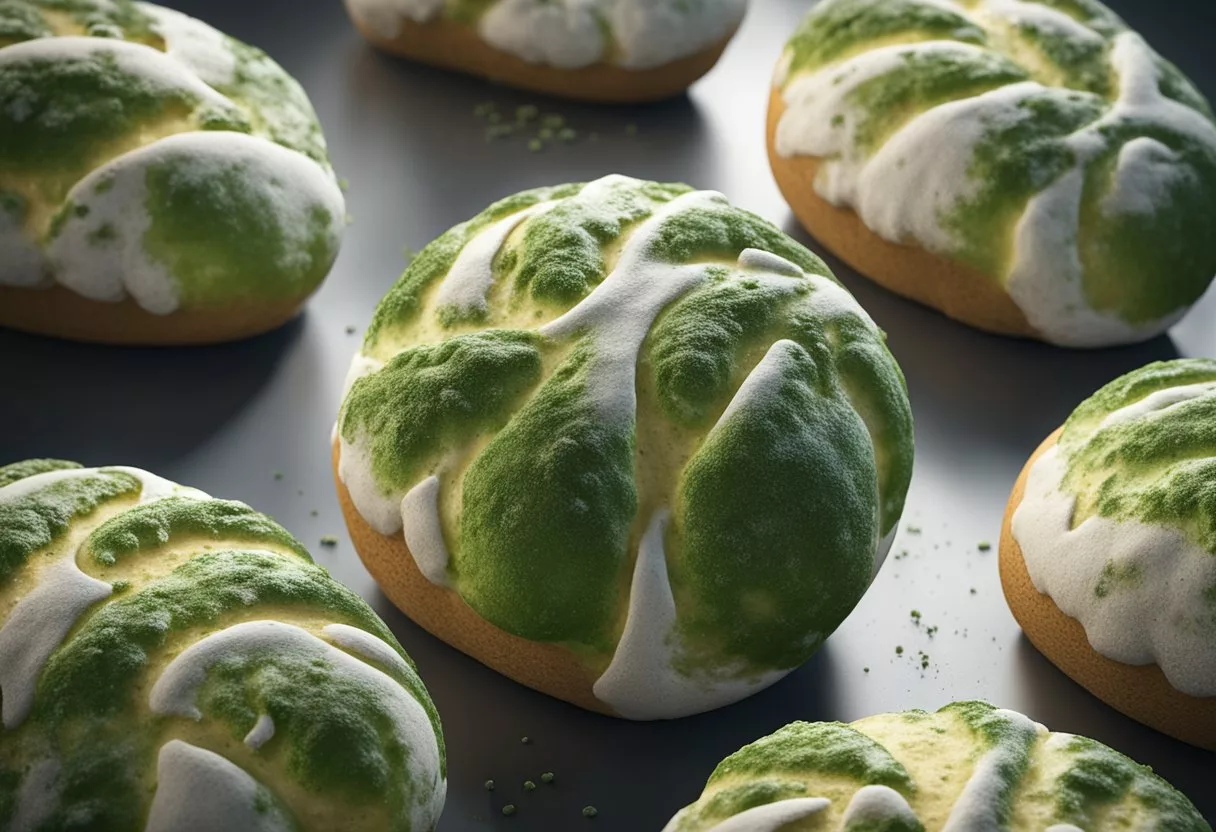
Moldy food can be a health hazard, but not all molds are harmful. Some molds are used to create certain types of food, such as blue cheese, and are safe to eat. In this section, we will discuss how to identify and handle moldy foods to ensure food safety.
When to Discard Moldy Food
If you spot mold on any food, it’s best to discard it. According to Food Safety and Inspection Service[1], “Molds that are not a part of the manufacturing process can be dangerous. Foods with high moisture content can be contaminated below the surface.”
Hard cheeses, such as cheddar or Parmesan, can be saved by cutting off at least an inch around and below the mold spot. However, soft cheeses, such as brie or camembert, should be discarded if mold is present.
Fruits and vegetables with mold should also be discarded. Firm fruits, such as peaches or apples, can be saved by cutting off at least an inch around and below the mold spot. However, soft fruits, such as berries or tomatoes, should be discarded if mold is present.
Moldy bread, baked goods, nuts, and legumes should also be discarded. Jams or jellies with mold should be discarded, as well.
Safe Consumption of Certain Moldy Foods
Some moldy foods are safe to eat. Hard salami and firm fruits, such as unblemished apples and pears, are safe to eat after mold is removed by cutting off at least an inch around and below the mold spot.
Hard cheeses, such as blue cheese and Gorgonzola, are safe to eat as long as the mold is part of the manufacturing process.
Soft cheeses, such as brie or camembert, should be discarded if mold is present. Yogurt and sour cream with mold should be discarded, as they can contain Listeria, a harmful bacteria that can cause serious illness.
Preventing Mold Growth on Food
To prevent mold growth on food, it’s important to keep food fresh and stored in the right conditions.
Refrigerate perishable foods promptly and keep the refrigerator temperature at 40°F or below. Store food in airtight containers or wrap it tightly in plastic wrap to prevent spoilage.
Medical Response to Mold Ingestion
Mold ingestion can cause a range of symptoms, from mild to severe, depending on the type of mold and the amount ingested. While most people will not experience any serious health problems from eating mold, some may require medical attention.
When to See a Doctor
If someone experiences severe symptoms after eating mold, they should seek medical attention immediately. Symptoms that may indicate a serious reaction to mold ingestion include:
- Difficulty breathing
- Swelling of the face, throat, or tongue
- Rapid heartbeat
- Dizziness or lightheadedness
- Severe abdominal pain or cramping
- Vomiting or diarrhea
In some cases, mold ingestion can cause an allergic reaction, which can be life-threatening. If someone has a known allergy to mold or has had a severe allergic reaction to mold in the past, they should seek medical attention immediately if they suspect they have ingested mold.
Treatments for Mold Exposure
Mold ingestion can cause a range of symptoms, including nausea, vomiting, diarrhea, and abdominal pain. In most cases, these symptoms will resolve on their own within a few days. However, some people may require medical treatment to manage their symptoms.
Anti-nausea medication may be prescribed to help manage nausea and vomiting.
In severe cases, hospitalization may be required to provide intravenous fluids and electrolytes to prevent dehydration. Gastroenterologists may be consulted to help manage symptoms and provide supportive care.
If someone has ingested mold that produces mycotoxins, such as penicillin, they may require treatment with antibiotics. However, antibiotics are not effective against all types of mold, and should only be prescribed by a doctor if they are necessary.
Mold Beyond Food
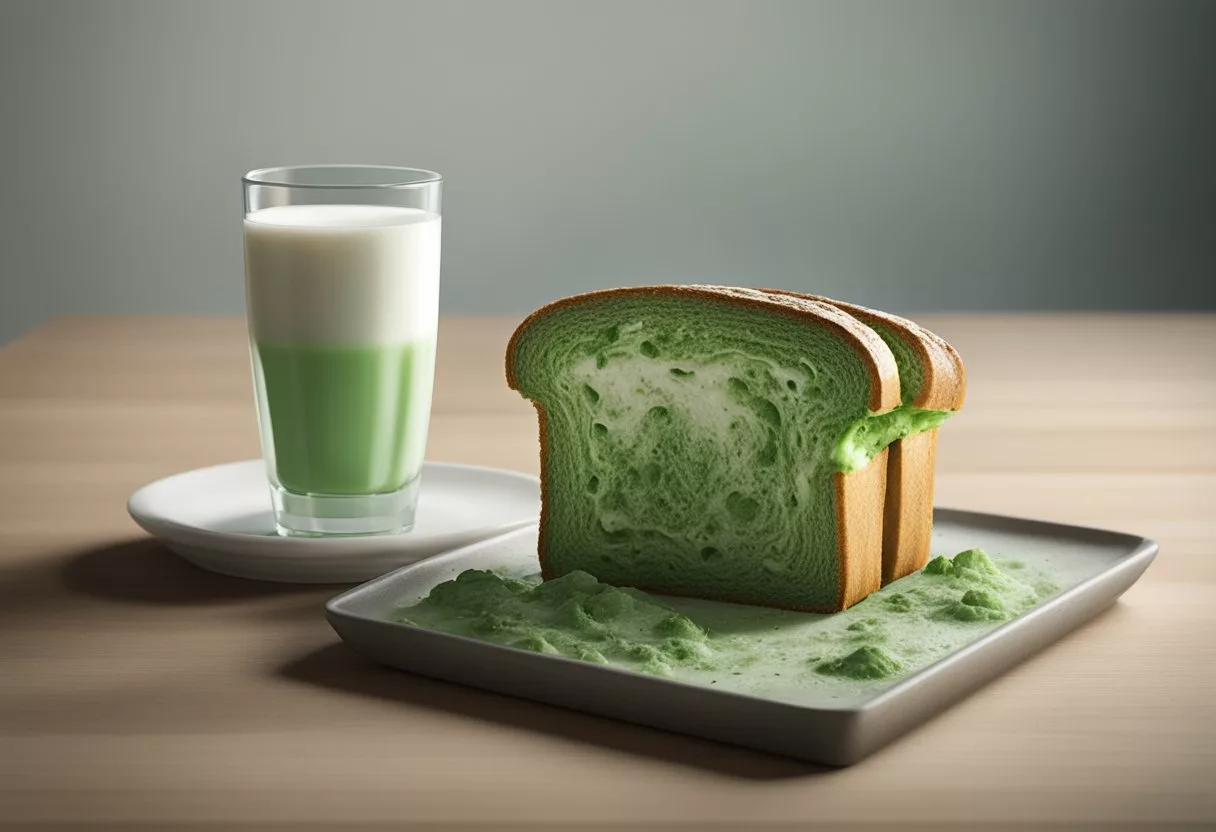
Mold is not just a problem in food. It can also be found in the environment, including soil, dust, and the air.
In this section, we will explore the different places where mold can be found and how to reduce exposure to mold spores.
Mold in the Environment
Mold can grow in many different environments, including soil, plants, and decaying organic matter. It is also commonly found in dust and can easily spread through the air.
In homes, mold can grow on walls, ceilings, and other surfaces that are exposed to moisture.
One common place where mold can grow is in the bathroom. The warm, moist environment of the bathroom provides an ideal breeding ground for mold.
To prevent mold growth in the bathroom, it is important to keep the area clean and dry. Use a fan or open a window to promote air circulation and reduce humidity.
Mold can also grow in other areas of the home, such as the basement or crawl space. These areas are often damp and poorly ventilated, which can lead to mold growth.
To prevent mold growth in these areas, it is important to keep them clean and dry. Use a dehumidifier to reduce humidity and promote air circulation.
Reducing Exposure to Mold Spores
Exposure to mold spores can cause a variety of health problems, including allergic reactions, respiratory problems, and other health issues.
To reduce exposure to mold spores, it is important to take steps to prevent mold growth in the home.
One way to reduce exposure to mold spores is to keep the home’s humidity level below 60%. This can be achieved by using a dehumidifier or air conditioner to reduce humidity levels.
It is also important to fix any leaks or water damage in the home to prevent mold growth.
Another way to reduce exposure to mold spores is to clean and disinfect surfaces regularly. This can help to remove mold spores and prevent them from spreading.
Use a solution of bleach and water to disinfect surfaces and kill mold spores.
The Science of Mold
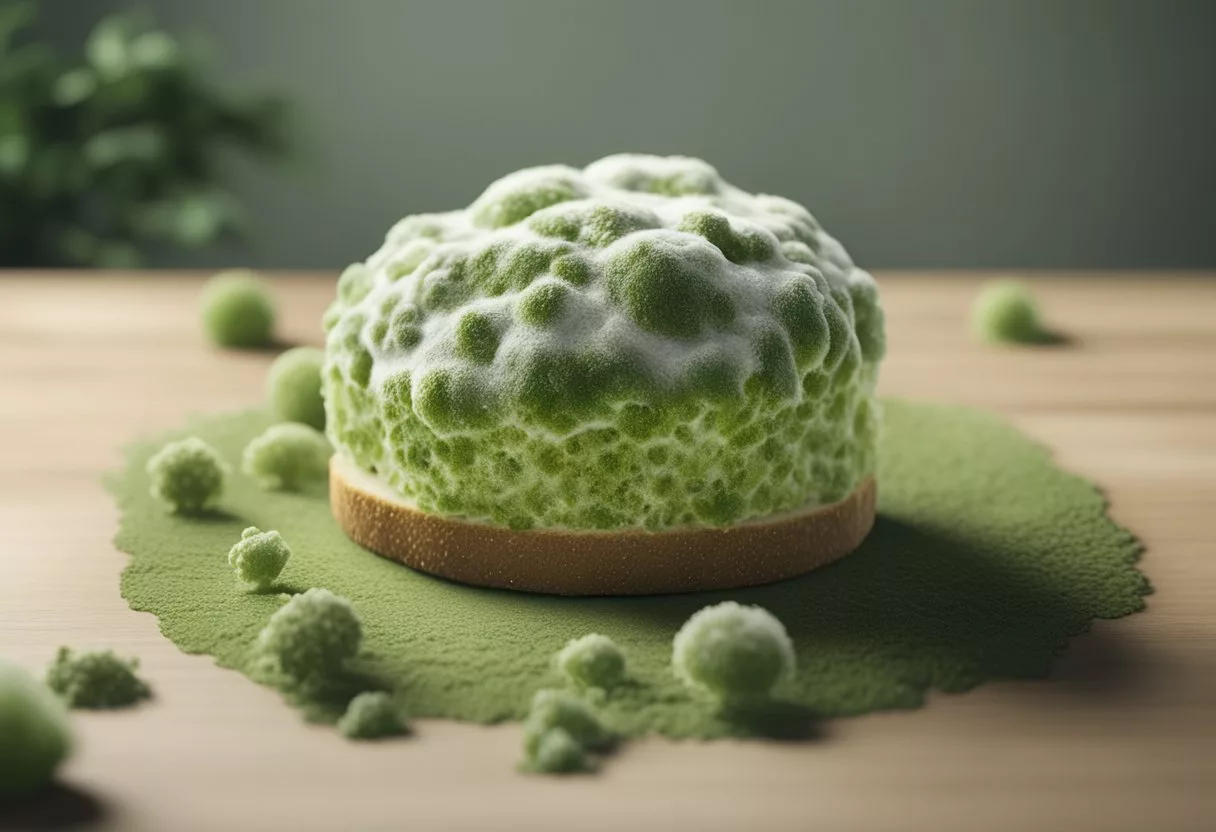
Mold is a type of fungi that can grow on different surfaces, including food, soil, and plants.
Mold reproduces by releasing spores that can travel through the air and settle on surfaces where they can grow and form new colonies.
While some types of mold are beneficial, others can produce poisonous substances known as mycotoxins that can cause health problems if ingested or inhaled.
How Mold Produces Toxins
Mold produces mycotoxins as a defense mechanism to protect itself from other microorganisms. These toxins can be harmful to humans and animals if ingested or inhaled.
Aflatoxins are one type of mycotoxin that can be found in cereals, spices, and other foods. Aflatoxins have been linked to liver cancer and other health problems.
The Role of Mold in Nature
Mold plays an important role in nature by breaking down dead organic matter, such as fallen leaves and trees. This process helps to recycle nutrients back into the soil, which is essential for plant growth.
Some types of mold are also used in the production of food and beverages, such as cheese and beer.
Specific Foods and Mold Risks
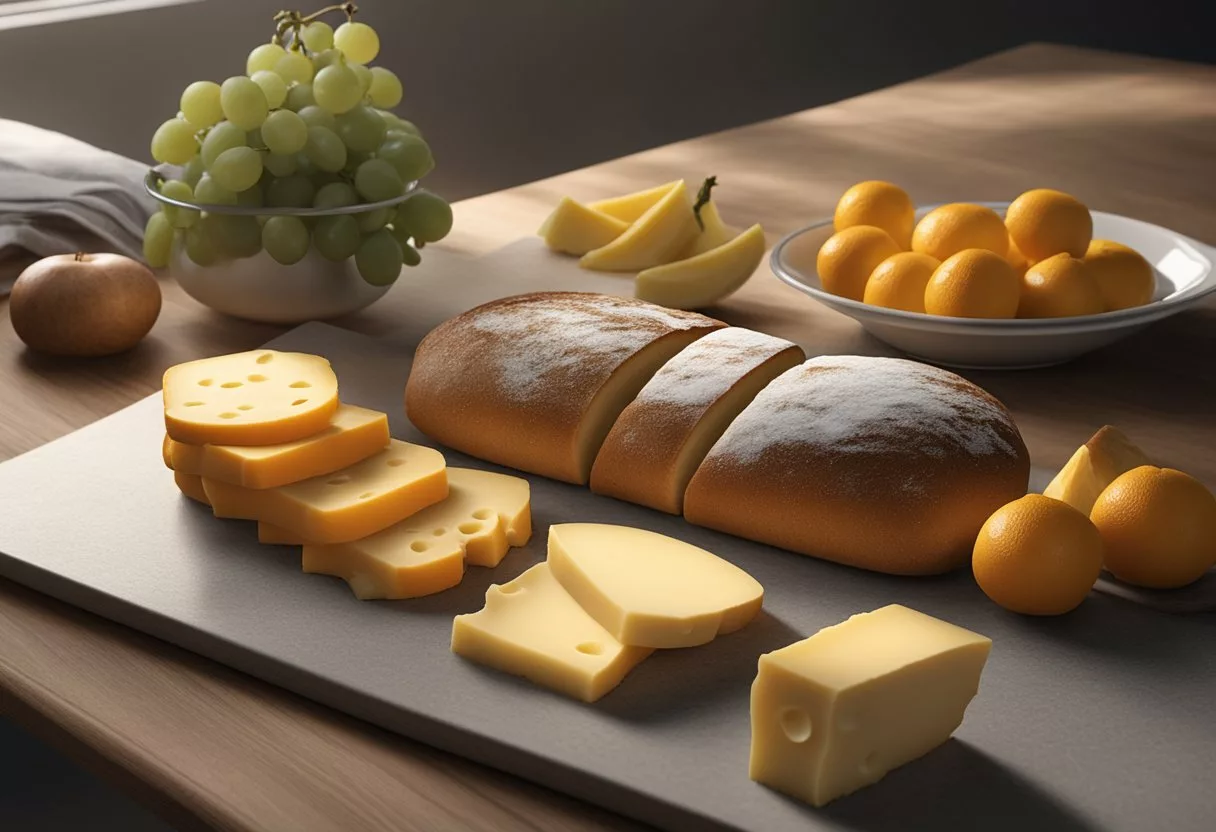
High-Risk Foods for Mold Contamination
Certain foods are more susceptible to mold contamination than others.
Grain and nut crops, such as wheat, corn, and peanuts, are particularly vulnerable to mold growth.
Peanut butter, made from ground peanuts, can also harbor mold if not stored properly.
Vegetables like cabbage, bell peppers, and carrots are also at risk of mold growth, especially if they are not stored in a cool, dry place.
Fruits like bananas and tomatoes are also prone to mold.
Bananas are often sold in bunches, and if one banana in the bunch is moldy, the rest can quickly become contaminated.
Tomatoes, especially when overripe, can develop mold on their skin and in their flesh.
Understanding Food Preservation and Mold
Certain foods are more resistant to mold growth than others due to their processing or preservation methods.
For example, dry-cured country hams have a low water content, making them less susceptible to mold growth.
Jams and jellies, which have a high sugar content, are also less likely to develop mold.
Soft foods, such as cucumbers and brain, are more susceptible to mold growth due to their high water content. These foods should be consumed soon after purchase and stored properly to prevent mold growth.
It’s important to note that consuming moldy food can potentially cause harm.
Mold can produce toxins called mycotoxins, which can cause food poisoning and other health problems.
Symptoms of mold exposure can include nausea, vomiting, and diarrhea. If you suspect you have consumed moldy food and are experiencing symptoms, seek medical attention immediately.
Frequently Asked Questions
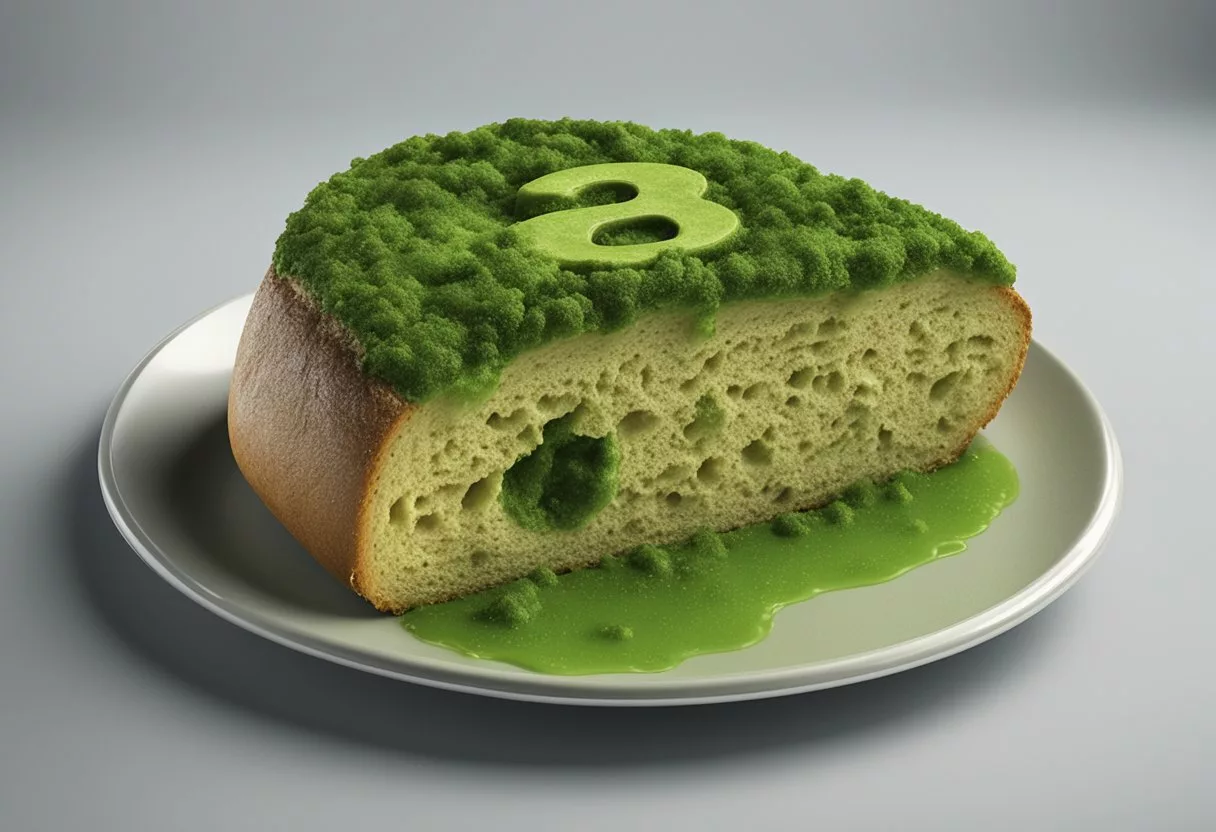
Can consuming moldy food lead to illness?
Yes, consuming moldy food can lead to illness.
The severity of the illness depends on several factors, including the type of mold, the amount consumed, and the individual’s overall health.
Some molds produce mycotoxins, which are toxic substances that can cause a range of health problems, from mild allergic reactions to serious neurological damage.
It is important to note that not all molds produce mycotoxins, and not all individuals will react to mold in the same way.
What are the immediate steps to take after ingesting moldy food?
If you have ingested moldy food, the first step is to remove any remaining mold from the food and discard it.
If you experience any symptoms, such as nausea, vomiting, or diarrhea, it is important to stay hydrated by drinking plenty of fluids.
In some cases, inducing vomiting may be necessary, but this should only be done under the guidance of a medical professional.
Are there long-term effects of eating mold-infested food?
The long-term effects of eating mold-infested food are not well understood.
In some cases, individuals may develop allergies or sensitivities to mold, which can lead to chronic respiratory problems.
However, more research is needed to fully understand the long-term health effects of consuming moldy food.
How does mold on food affect pregnant women?
Pregnant women are at an increased risk of developing serious health problems from consuming moldy food.
Some molds produce mycotoxins that can cause fetal development problems, such as growth retardation and malformations.
Pregnant women should be especially cautious when consuming moldy food and should seek medical attention if they experience any symptoms.
Is it necessary to induce vomiting after eating moldy food?
Inducing vomiting after eating moldy food is not always necessary.
In some cases, the body’s natural defense mechanisms will be sufficient to rid itself of the mold.
However, if an individual experiences severe symptoms, such as difficulty breathing or loss of consciousness, it may be necessary to induce vomiting or seek medical attention.
Does the type of mold on food change the health risks involved?
Yes, the type of mold on food can change the health risks involved. Some molds produce mycotoxins that are more toxic than others. Also, some individuals may be more sensitive to certain types of mold. It is important to identify the type of mold present and to take appropriate precautions based on the specific health risks involved.
References
- Molds on Food: Are They Dangerous?. https://www.fsis.usda.gov/food-safety/safe-food-handling-and-preparation/food-safety-basics/molds-food-are-they-dangerous Accessed October 30, 2025
